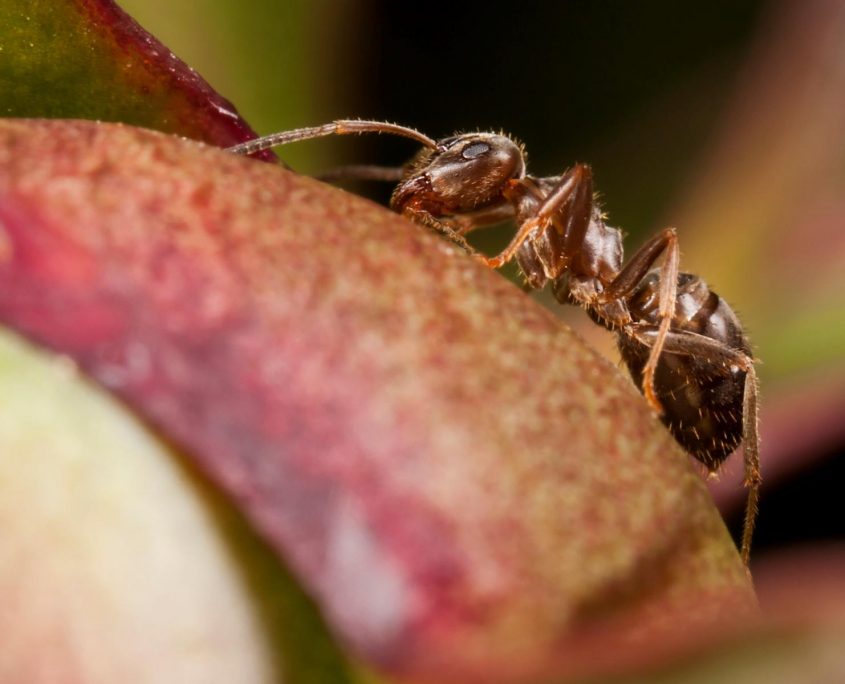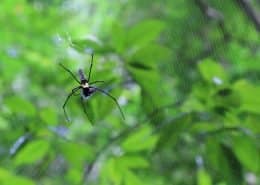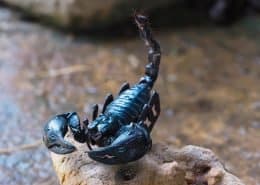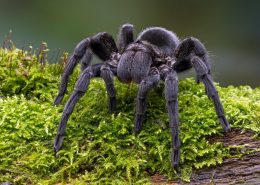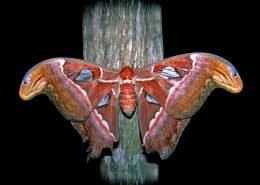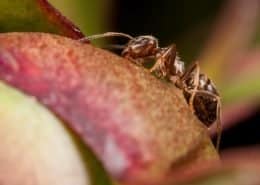Termites And Ants
Isoptera / Hymenoptera
Description:
Termites and ants may seem to be related, but they are actually part of entirely different taxonomical orders. Termites are rather related to cockroaches, ants on the other hand have traits they share with wasps and bees. Both types of insect are described as being eusocial – meaning that they exercise a division of labor, have different generations live together under one roof, cooperate when it comes to building nests and care for their young, and that only one (or a few) female(s) reproduce, with the others being sterile.
Did you know...?
… that, despite their many similarities, ants and termites don’t get along well with each other? In fact, ants raiding termite colonies and eating those little insects are the termites’ worst enemies!
| Insects: | ||
| Body: | Termites are white in color and completely blind (only the king and queen have eyes), so they use scent to navigate. They also don’t have a ‘waist’. Their abdomen is blunt at the end and their antennae look like a string of beadlike segments. | The abdomen of ants is pointed at the end and their antennae, which they use for navigation, smell and taste, are bended. |
| Diet: | Termites are detrivores, meaning they eat decomposing organic materials. There are two species of termites commonly found in Khao Sok National Park, arboreal termites, which feed on decaying wood, and fungus termites, which grow a special fungus inside their mound for food. | Ants can have various diets. Some species only feed on one kind of food, like the leaf cutting ant, which eats only one kind of fungus grown within the hive. The Giant Forest Ant, for example, prefers honeydew and bird droppings. Other species might even be omnivores eating anything they can find. |
| Nest: | Termite mounds are designed to house the colony. They also include highly complex tunnel systems ensuring temperature regulation and ventilation as well as escape routes in case predators raid the homes. Termite mounds are made of soil, wood, saliva and feces. | Where ants live varies greatly from species to species. Some build nests on the ground, others use silk to sew leaves together (weaver ants). Some species don’t build nests at all, living a nomadic life. |
| Social structure – Royalty: | Termites have a queen and a king who constantly mate. The king is the only sexually active male termite and has to serve the queen. The queen can lay up to 1,000 eggs per day. With every molt she adds another set of ovaries to her body, resulting in a greatly enlarged abdomen andincreased egg productivity. | Ant kings shortly die after mating because the queen’s eggs are fertilized for her whole live after the first encounter of the two. She actually stores his gametes inside her (in a pouch close to the abdomen) for future use. The queen controls the sex of the young ants with fertilized eggs resulting in females and unfertilized eggs in males, who later fertilize a different virgin queen. |
| Social structure – Workers: | Each group of workers has its special task, such as building tunnels, collecting food and water, taking care of new eggs and repairing the nest. workers also feed the other members of the colony. Only the oldest workers leave the nest to search for food, since this is the most dangerous task and can result in death. | Ant workers have the same tasks as termite workers. The only difference is that all ant workers are sexually undeveloped females, whereas in termites they might be female or male. |
| Social structure – Soldiers: |
Soldiers have special body features, making them stronger and providing them with weapons against predators. They are responsible for protecting the colony. Soldiers have enlarged mandibles (that are actually so large that these termites cannot feed themselves) with which they can cut predators in halves. Some soldiers also have a special pointy head and can spray a sticky irritating liquid on their predator. | Not all ant species have specialized soldier ants – sometimes this is just another job that workers take turns in. Other species might have enlarged heads and stronger jaws to protect the colony. |

